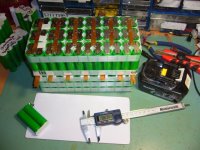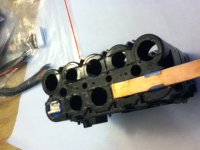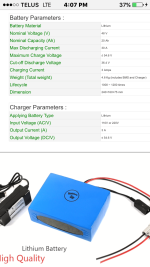Pwnlord187
10 W
- Joined
- Jul 27, 2016
- Messages
- 73
When fully charged, (48/52V, at 59/60V) I have to wait a few minutes before the voltage falls into the controllers operating range (any other workaround for this? Would be nice to grab my bike and just go when I'm in a hurry, I have the lcd3)
Anyways my question is, sooner than later the top charge of my battery goes down to about 52V, and when I ride opening the throttle all the way takes the voltage temporarily down to 42,41,40V, then back up to 52V when I let go, actually more like it goes back to 50 or 51V. But when it dips down to 40V the LVC kicks in..so I've lowered the LVC by 5% to prevent this happening and cutting my ride short for now..I know it's normal for the voltage reading to go down while accelerating, but how much is normal?
Thanks
Anyways my question is, sooner than later the top charge of my battery goes down to about 52V, and when I ride opening the throttle all the way takes the voltage temporarily down to 42,41,40V, then back up to 52V when I let go, actually more like it goes back to 50 or 51V. But when it dips down to 40V the LVC kicks in..so I've lowered the LVC by 5% to prevent this happening and cutting my ride short for now..I know it's normal for the voltage reading to go down while accelerating, but how much is normal?
Thanks




